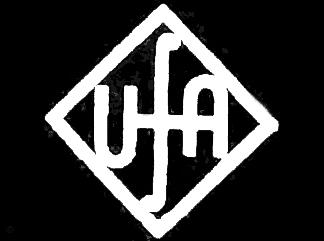Flying from Bishop airport is like flying 50 years ago: the scale of operations is considerably smaller than that at Detroit Metro.
I parked the auto in the long-term lot in a spot about 400 feet from the front door of the terminal. Inside the terminal, we walked to the TSA area and did a quick glissade into our respective lines, and we were through before my pants could fall due to the belt being removed for the x-ray machines.
We flew back from Baltimore, a much larger airport, but it was similarly under-crowded, and our trip was pretty much a sly portamento of bags into cargo hold, AIS (as Frank Barrone would say on Everybody Loves Raymond), meditation on the transitory nature of life (I'm not a fond flyer), grab a soda, eat some nuts, read a paragraph or two, and land.
Then walk a sixteenth of a mile to baggage claim and stand around like 30 sardines packed into a largish Home Depot bucket, waiting for one's club bag while having enough room to practice one's golf swing.
Of course, a lot of this is due to General Motors' abandonment of the city of Flint, as documented by Michael Moore in Roger and Me. However, why do we have to wait for the painful contractions of capitalism to demonstrate to us that there is a point at which economies of scale begin to break down under their own weight, and the quality of life begins to plummet?
I was reading about China's South-North Water Diversion Project:
http://www.terradaily.com/reports/Doubts_as_giant_China_projects_water_reaches_capital_999.html
... But the 1.05 billion cubic metres it is intended to deliver to Beijing every year will be not be enough to end the city's thirst.I have written before about Henry Ford's idea of "cottage" industry: various manufacturies being dispersed through the countryside, powered by hydroelectricity (an today, he'd probably add wind and solar).
As China's cities become richer, water consumption by citizens has rocketed, and is set to grow further.
The capital's annual water use has reached 3.6 billion cubic metres, and with supplies at only about 2.1 billion cubic metres it already faces a 1.5 billion cubic metre shortfall every year...
The hydro was small scale dams and hydroelectric plants. I used to work near one in Ypsilanti, Michigan, which still stood astride the Huron River, and provided power to the original Ford Rawsonville Plant at 10300 Textile Road, Ypsilanti Township, Michigan:
Turbine Building on the Dam on Bridge Road facing South
One may see the plant water tower in the distance. Here's a close up:
photo: Dwight Burdette http://www.panoramio.com/photo/57504577
Then there's a monument at the plant:
photo: Dwight Burdette
and according to Dwight Burdette's site http://www.panoramio.com/photo/57278086
(I include the photo of the statue, because Steve Yokich once helped me with my golf swing. This happened at Brys Park in St. Clair Shores. He actually tried to negotiate me never to play golf again.)My sister did some research and determined that the statues are of UAW President Stephen Yokich, Ford CEO, President and Chairman Bill Ford, and Ford Vice President Peter Pestillo.There are duplicates of the statues in front of UAW local 898 a mile west on Textile Road, but in the statue there Yokich is not wearing glasses.
Enormous scales require enormous expenditures.
Even though there are economies in providing services in a compact area, when the city population surges into the multi-millions, things begin to fall apart, and there are fewer economies and the quality of life decreases.
Quality of life - even when poor quality leads to increasing health costs - has never truly been a major factor in decision making in a system devoted solely to profit and power.
--



















